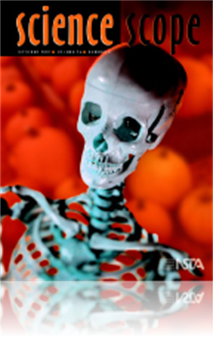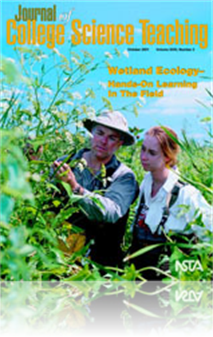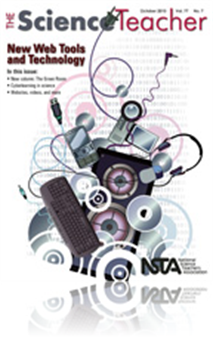All Resources
Journal Article
After the Bell: The Science and Mathematics of Nature
Sometimes it is difficult to show students that science and mathematics are natural parts of life. The activities in this article can help students take a broad view of their world through careful observation and exploration of the naturally occurrin...
Journal Article
Inquiry by Design: Creating a national and state standards-based high school science program
In this article, the science coordinator examines the science program and wanders if it makes sense for student learning and if it could be adapted to meet state standards. The query was taken to the department and an agreement was reached to invest...
Journal Article
Wetland ecology is a complex subject that draws from several scientific disciplines. While classroom lectures are necessary to teach the vast body of scientific data, there is no substitute for field and laboratory experiences to enrich learning. Thi...
Journal Article
Who Wants to Make Assessment Fair?
An assessment strategy based on the television game show, “Who Wants to Be a Millionaire,” helps teachers make grading fair. The author describes which game show strategies to apply to classroom assessment and which to avoid. This teaching approa...
Journal Article
Why Does My Cruorine Change Color?
The classical research literature provides material appropriate for use in problem-based courses. Here, the spectroscopic study by G. G. Stokes of the reversible “oxidation and reduction” of hemoglobin illustrates how a series of open-ended group...
Journal Article
The Idea Bank provides tips and techniques for creative teaching, in about 1,000 words. In this month’s Idea Bank learn about demonstrations using concave mirrors....
Journal Article
Quiz Clues: Providing visual cues for daily quizzes
The teaching strategy of using the word “QUIZ” to provide visual cues for daily quizzes prompted students to talk before class, debating the possible hidden meanings before the quiz. It is not necessary to prepare intricate artwork in advance—...
Journal Article
Teaching Technical Writing: Switching to concept-based lab reports
Technical writers and technical writing skills are in great demand, and the high school science lab is the perfect place to lay the groundwork for technical writing skills. The concept-based lab report addresses two needs of high school students—to...
Journal Article
This hands-on, create-a-skeleton activity will reinforce skeletal and muscular system knowledge and foster creativity. Students work in cooperative groups to construct life-size skeleton models, write individual lab reports, and give group presentati...
Journal Article
Reading Your Way to Scientific Literacy
Having students read and analyze scientific articles gives them an understanding of scientific information as presented in the literature. After studying classic and recent research articles, students answer homework questions, individually and in gr...





